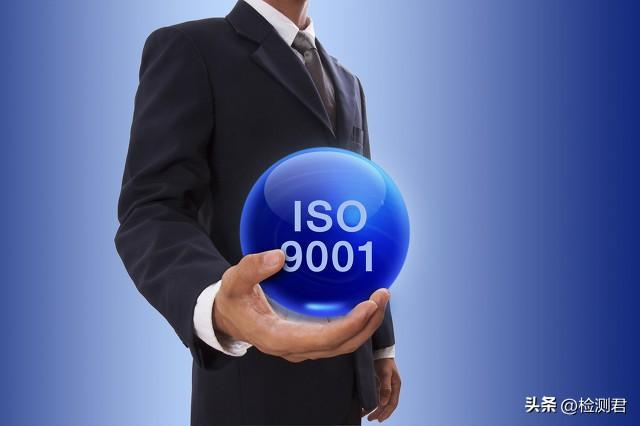ISO9001:2015 Quality Management System:
Part 1. Management of documents and records
1.The office should have a list of all documents and blank forms of records;
2.List of external documents (quality management, standards related to product quality, technical documents, data, etc.), especially documents of national mandatory laws and regulations, and records of control and distribution;
3. Document distribution records (required for all departments)
4.List of controlled documents of each department. Including: quality manual, procedure documents, supporting documents from various departments, external documents (national, industrial, and other standards; materials that have an impact on product quality, etc.);
5. Quality record list of each department;
6. List of technical documents (drawings, process procedures, inspection procedures, and distribution records);
7.All types of documents must be reviewed, approved, and dated;
8.The signatures of various quality records should be complete;
Part 2. Management Review
9. Management review plan;
10.”Sign-in Form” for management review meetings;
11. Management review records (reports from management representatives, discussion speeches from participants, or written materials);
12. Management review report (see the “Procedure Document” for the content);
13. Rectification plans and measures after management review; Records of corrective, preventive, and improvement measures.
14. Tracking and verification records.
Part3. Internal audit
15. Annual internal audit plan;
16. Internal audit plan and schedule
17. Letter of appointment of the internal audit team leader;
18. Copy of qualification certificate of internal audit member;
19. Minutes of the first meeting;
20. Internal audit checklist (records);
21. Minutes of the last meeting;
22. Internal audit report;
23. Nonconformity report and verification record of corrective measures;
24. Relevant records of data analysis;
Part4. Sales
25. Contract review records; (Order review)
26. Customer account;
27. Customer satisfaction survey results, customer complaints, complaints, and feedback information, standing books, records, and statistical analysis to determine whether the quality objectives have been achieved;
28. After sales service records;
Part5. Procurement
29. Qualified supplier evaluation records (including evaluation records of outsourcing agents); And materials for evaluating the performance of the supply;
30. Qualified supplier evaluation quality account (how many materials have been purchased from a certain supplier, and whether they are qualified), procurement quality statistical analysis, and whether the quality objectives have been achieved;
31. Purchase ledger (including outsourced product ledger)
32. Procurement list (with approval procedures);
33. Contract (subject to approval by the department head);
Part 6. Warehousing and Logistics Department
34. Detailed account of raw materials, semi-finished products, and finished products;
35. Identification of raw materials, semi-finished products, and finished products (including product identification and status identification);
36. Entry and exit procedures; First in, first out management.
Part7. Quality Department
37. Control of nonconforming measuring tools and tools (scrapping procedures);
38. Calibration records of measuring tools;
39. Completeness of quality records in each workshop
40. Tool name ledger;
41. The detailed account of measuring tools (which should include the measuring tool verification status, verification date, and retest date) and the preservation of verification certificates;
Part 8. Equipment
41. Equipment list;
42. Maintenance plan;
43. Equipment maintenance records;
44. Special process equipment approval records;
45. Identification (including equipment identification and equipment integrity identification);
Part 9. Production
46. Production plan; And planning (meeting) records for the realization of production and service processes;
47. List of projects (standing book) to complete the production plan;
48. Nonconforming product account;
49. Disposal records of nonconforming products;
50. Inspection records and statistical analysis of semi-finished and finished products (whether the qualification rate meets the quality objectives);
51. Various rules and regulations for product protection and storage, identification, safety, etc;
52. Training plans and records for each department (business technology training, quality awareness training, etc.);
53. Operation documents (drawings, process procedures, inspection procedures, operating procedures to the site);
54. Key processes must have process procedures;
55. Site identification (product identification, status identification, and equipment identification);
56. Unverified measuring tools shall not appear on the production site;
57. Each type of work record of each department should be bound into a volume for easy retrieval;
Part 10. Product Delivery
58. Delivery plan;
59. Delivery list;
60. Evaluation records of the transportation party (also included in the evaluation of qualified suppliers);
61. Records of goods received by customers;
Part 11. Personnel Administration Department
62. Job requirements for post personnel;
63. Training needs of each department;
64. Annual training plan;
65. Training records (including: internal auditor training records, quality policy and objective training records, quality awareness training records, quality management department document training records, skill training records, inspector induction training records, all with corresponding assessment and evaluation results)
66. List of special types of work (approved by relevant responsible persons and relevant certificates);
67. List of inspectors (appointed by the relevant responsible person and specifying their responsibilities and authorities);
Part 12. Safety management
68. Various safety rules and regulations (relevant national, industrial, and enterprise regulations, etc.);
69. List of fire-fighting equipment and facilities;
Post time: Apr-04-2023






